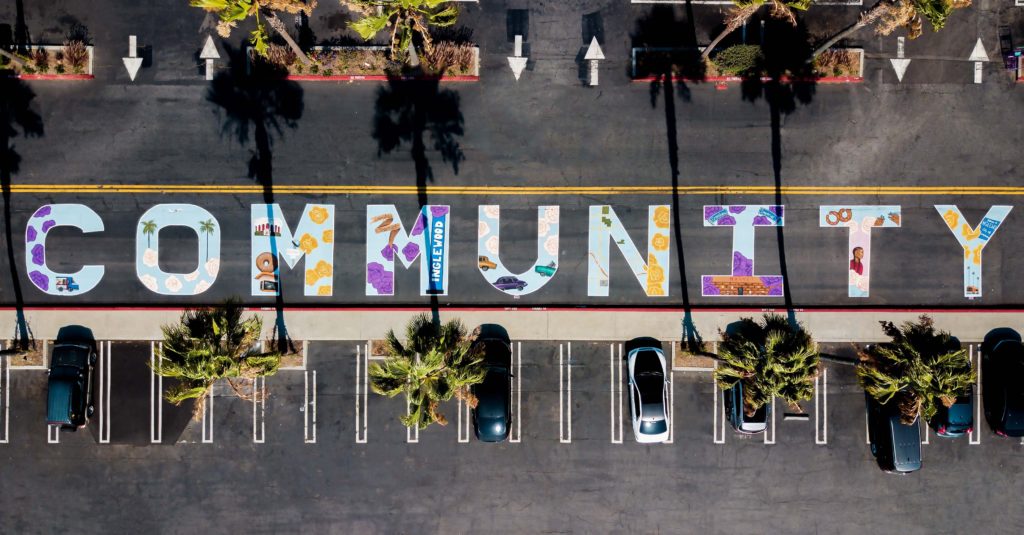What’s in Store?
The significant trends and big ideas that will shape the future of retail.
From pandemic disruption to economic turmoil, retail has experienced enormous change since 2020. For retailers and retail center owners and operators, one of the most exciting things about that isn’t the industry’s faster-than-expected recovery but the ideas and opportunities becoming more accessible and appealing than ever.
In a space where change has long been a constant and evolution is part of the everyday realities of doing business in a consumer-facing industry, talking about what’s next is a given. But there’s an unfortunate tendency to limit how we think about retail. Predictions tend to be dominated by seasonal forecasts, sales numbers, potential concepts and closures that might make headlines in the months ahead.
So, let’s think bigger. Let’s set our sights above the horizon.
Instead of inflation, let’s talk about inspiration. Instead of making guesses about markets and markups, let’s talk about how technology will change how people shop—both in and out of stores. Let’s talk about how shifting consumer preferences and priorities will reshape fundamental assumptions about value and where and how we spend our time. And let’s talk about the enduring and evolving interplay of commerce and community: how forward-thinking retail professionals who recognize the vitality of that intersection will continue to find new ways to strengthen it in inspiring and impactful ways.
In other words, let’s put a pin in projections for 2023 and widen the lens a little further to talk about the longer-term outlook: the significant trends and big ideas that will shape the future of retail.
Multichannel Confluence
The “online sales are killing brick-and-mortar retail” narrative from a few years ago is a thing of the past. Even given the massive boost to e-commerce that resulted from the impact of pandemic limitations, relatively few people made massive behavioral changes, and retail remained strong. The last few years confirmed that, when it comes to buying in-store or online, consumers aren’t either/or; they are both. The confluence of online and in-store purchases is more varied and complex than ever, with consumers moving seamlessly across multiple channels and retailers finding new ways to make their online and inline presence. Not only will this continue, but it will grow even more entwined and synergistic.
People-Powered

One of the most influential spaces in the future of retail isn’t in stores. It’s in the heads and hearts of consumers.
The best physical retail environments make people feel: they engage our senses and encourage us to touch, talk and experience the things we buy and the places we buy them differently.
The fundamental human connection to the vibrant spaces, people and products that form a social nucleus at the core of the retail atom will necessarily become more emphasized soon. Retail owners and operators talk about making their centers more experiential, but they are starting to recognize the degree to which shopping alone is an experience.
With that in mind, in-store personalization and engagement will become more of a priority. You can invest in landscaping and improving the surrounding environment all you want, but if similar emphasis and resources aren’t invested in ensuring the in-store experience is as seamless and enjoyable, none of the rest matters. A greater focus on the people in your stores will have to be a part of that—on both sides of the counter. Who are the merchants in your stores? What’s their story? How well do they connect with customers? These are critical questions that retailers will need to ask and answer with greater clarity from now on
Virtually Augmented
Another space for future retail innovation will be technology that enhances customer journeys. We’ll continue seeing a convergence between reality and virtual environments, with shoppers eventually able to browse and interact with people directly. Augmented reality will replicate that all-important in-store experience, even allowing people at home to browse before coming in and people in the store to see if products are available online.
However, the best technological retail innovations will continue to satisfy essential human needs, often by smoothing out some of the pain points and reducing the friction involved in visiting centers and making purchases. Traffic. Lack of parking. Waiting in line. Not being able to find your size. Experiencing poor customer service. These are spaces where tech can positively impact retail, becoming more sophisticated and integrated with physical centers. Something as simple as a parking counter with open spaces indicated by lights is a small way that tech already makes shoppers’ lives easier. Retailers who support consumer-facing tech innovations that facilitate better customer experiences will find themselves at an advantage.
Lower Cost of Distance
In retail calculus, distance has always been a negative factor. We equate proximity to value and assume people will be less likely to visit a store if it is farther away. But I suspect that retail’s future is one where the importance of travel time is perceived differently. Say you’re in a ride share or a driverless vehicle that allows you to finish work on your way to the store; the “cost” of distance has gone down. If you don’t have to commute to work, a short drive to the store might feel less like an imposition and more like a fun excursion. In a world where people are increasingly mobile and willing to live in different places, how we evaluate retail locations and environments will inevitably evolve.
Community: Centered

One way that location will continue to matter is in a retail center’s connection to the surrounding community—and the lives of the people in it.
The best and most successful centers emphasize community connection, behaving equally as a commercial center and a social and civic hub.
I expect to see more retail centers creating communities, not simply serving them. From celebrations to charitable initiatives to providing spaces and reasons for people to come together, the future of retail will remain an inherently collective enterprise. And yes, these are, first and foremost, commercial environments, but that doesn’t mean they can’t also be social or that the community element should be an afterthought. Happy, fulfilled people are the best shoppers—and even in an industry that continues to evolve and rethink old assumptions, that’s one fundamental truth that is unlikely to ever change.
